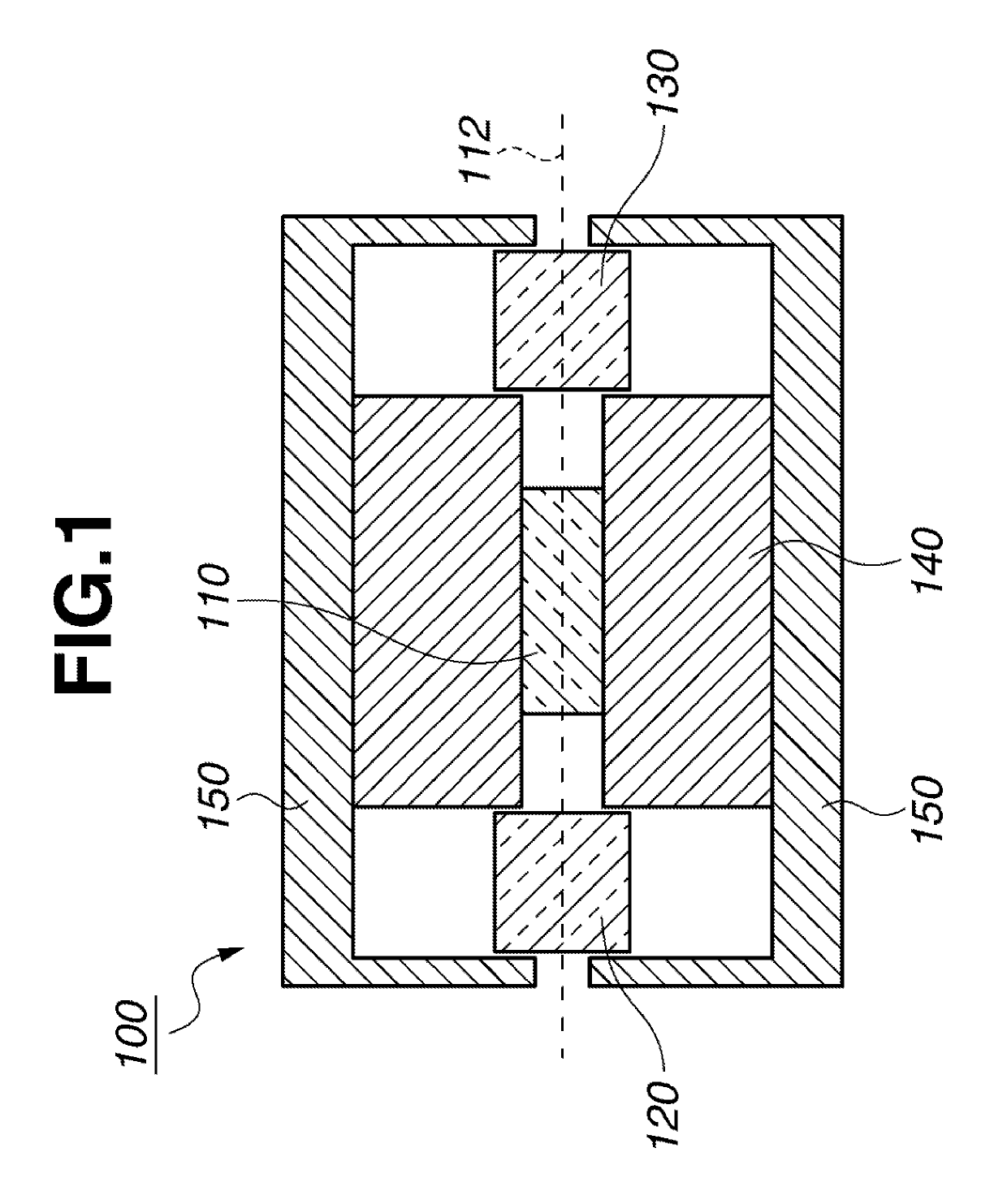Transparent ceramics, manufacturing method thereof, and magneto-optical device
a technology of transparent ceramics and manufacturing methods, applied in the field of transparent ceramics, manufacturing methods thereof, and magneto-optical devices, can solve the problems of difficult to achieve a high transmittance of at least 80%, difficult to uniformly mix the main component and the sintering aid, and achieve the effect of reducing rgd scattering
- Summary
- Abstract
- Description
- Claims
- Application Information
AI Technical Summary
Benefits of technology
Problems solved by technology
Method used
Image
Examples
example 1
Example 1-1
[0114]Terbium oxide powder (Tb4O7, purity ≥99.9 wt %) and yttrium oxide powder (Y2O3, purity ≥99.9 wt %), both available from Shin-Etsu Chemical Co., Ltd., were weighed in such amounts totaling to 50 g that a molar ratio of Tb:Y was 50:50. These powders and 0.2 g (corresponding to 0.5% by weight, calculated as oxide, of the sintering aid) of a zirconia precursor to serve as a sintering aid (compositional formula: ZrOCl2, purity 99.9 wt %, by Daiichi Kigenso Kagaku Kogyo Co., Ltd.) were dissolved in 200 ml of an acidic solution (compositional formula: HNO3, concentration: 43 wt %, by Wako Pure Chemical Corp.). Then a basic solution (compositional formula: NH3, concentration: 23 wt %, by Wako Pure
[0115]Chemical Corp.) was added dropwise to the solution whereupon a substantially insoluble hydroxide salt precipitated. The hydroxide salt thus precipitated was collected on a Buchner funnel and fired in oxygen atmosphere at 1,000° C. for 3 hours, obtaining terbium-containing oxi...
examples 1-2 to 1-10
and Comparative Examples 1-1 to 1-8
[0133]Secondary sintered body samples were manufactured under the same conditions as in Example 1-1 except that at least any one of the heating rate up to the predetermined temperature T1, sintering temperature T, and HIP temperature was changed. In Comparative Examples 1-3 and 1-4, the sintering temperature T was 1,200° C. and the heating rate up to 1,200° C. was a constant rate of 100° C. / h and 200° C. / h, respectively.
[0134]The results of Examples 1-1 to 1-10 and Comparative Examples 1-1 to 1-8 are tabulated in Tables 1 and 2. FIG. 2 is a diagram showing diffuse transmittance spectra of Example 1-1 and Comparative Example 1-6.
TABLE 1Example1-11-21-31-41-5RawTerbiumMolar ratio (%)5050505050materialoxideRare earthTypeY2O3Y2O3Y2O3Y2O3Y2O3oxideMolar ratio (%)5050505050SinteringTypeZrO2ZrO2ZrO2ZrO2ZrO2aidContent (wt %)0.50.50.50.50.5StepsSource powder preparation3-component co-precipitationSinteringSintering temp. T1,5001,5001,5001,5001,500(° C.)Tempe...
example 2
Examples 2-1 to 2-22
[0143]Secondary sintered body samples were manufactured under the same conditions as in Example 1-1 except that at least any one of the molar ratio of Tb / Y, the type and amount of sintering aid was changed. They were similarly evaluated.
[0144]The results are shown in Tables 3 and 4.
TABLE 3Example2-12-22-32-42-5Raw materialTerbiumMolar ratio (%)4040404050oxideRare earthTypeY2O3Y2O3Y2O3Y2O3Y2O3oxideMolar ratio (%)6060606050SinteringTypeZrO2ZrO2HfO2HfO2ZrO2aidContent (wt %)13131StepsSource powder preparation3-component co-precipitationSinteringSintering temp. T1,5001,6001,4001,5501,500(° C.)Temperature T1 (° C.)1,3001,3001,3001,3001,300Heatingup to T1100100100100100ratesubsequent2020202020(° C. / h)to T1Time (hr)22222AtmospherevacuumvacuumvacuumvacuumvacuumHIPTemperature (° C.)1,5001,6001,4001,5501,500Heating rate (° C. / h)300300300300300Time (hr)33333Pressure (MPa)198198198198198Evaluation resultsRelative density (%)96.895.496.696.196.2of primary sintered bodyAverage ...
PUM
| Property | Measurement | Unit |
|---|---|---|
| temperature T1 | aaaaa | aaaaa |
| temperature T1 | aaaaa | aaaaa |
| transmittance | aaaaa | aaaaa |
Abstract
Description
Claims
Application Information
 Login to View More
Login to View More - R&D
- Intellectual Property
- Life Sciences
- Materials
- Tech Scout
- Unparalleled Data Quality
- Higher Quality Content
- 60% Fewer Hallucinations
Browse by: Latest US Patents, China's latest patents, Technical Efficacy Thesaurus, Application Domain, Technology Topic, Popular Technical Reports.
© 2025 PatSnap. All rights reserved.Legal|Privacy policy|Modern Slavery Act Transparency Statement|Sitemap|About US| Contact US: help@patsnap.com


